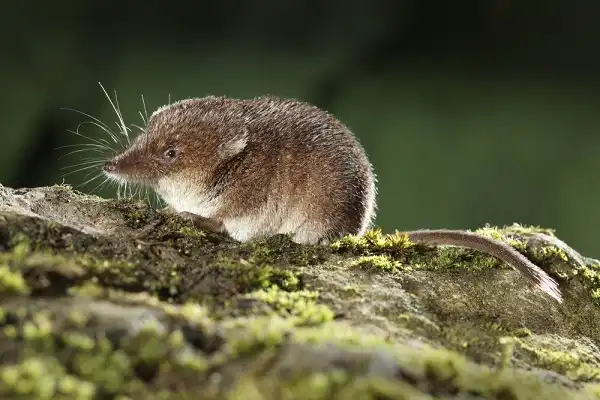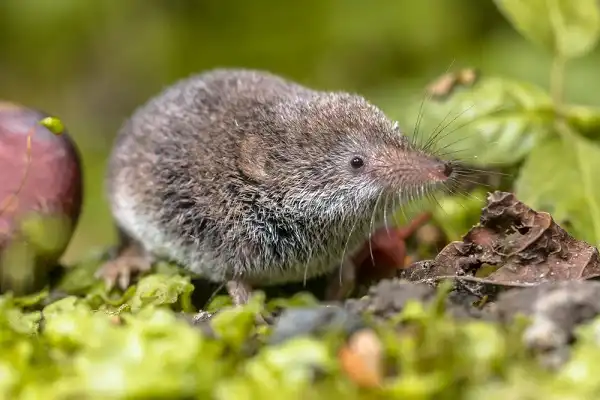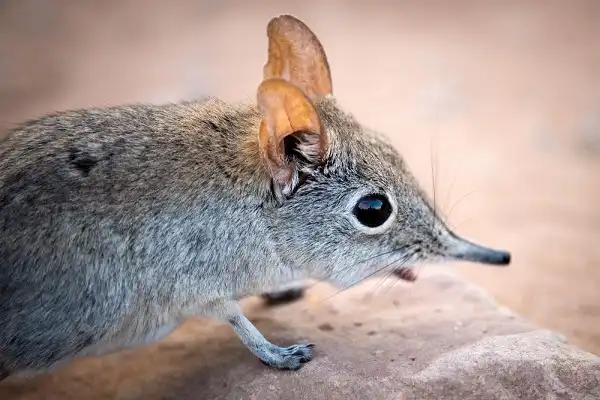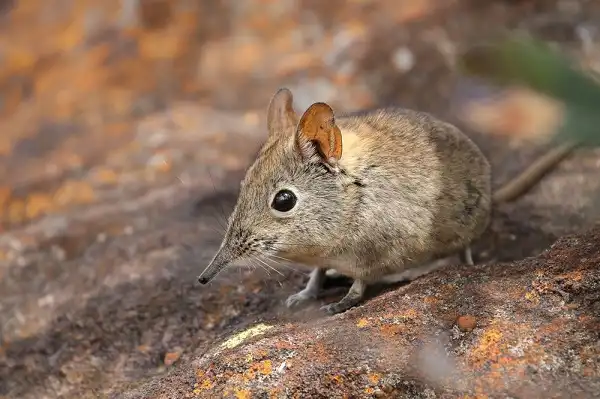The shrew is a unique and fascinating creature that has long intrigued humankind. These small, family-oriented mammals play an important role in their environment, eating insects and helping to keep populations of other pests under control. Their intricate social structures, hunting behaviors, crafty adaptations, and quirky personalities make them one of the most interesting species out there – something any outdoor enthusiast should take the time to learn about! In this article, we’ll explore everything that makes these animals so special: from their place amongst the order Eulipotyphla to why they sometimes bite humans when provoked. Come along for an immersive journey into the world of the ever-intriguing shrew!

Shrew Description
Shrews are small, mouse-like mammals that belong to the order Eulipotyphla. Despite their diminutive size, they possess a number of unique and fascinating features that make them stand out among other animals. For starters, shrews are highly social creatures, living in family groups and engaging in intricate social behaviors. They are also voracious predators, feeding primarily on insects and other small invertebrates. In fact, some species of shrews are so skilled at hunting that they are able to consume their own body weight in food each day! Despite their many charms, however, shrews can be surprisingly aggressive when provoked. Some species will readily bite humans if they feel threatened, and their sharp teeth can inflict painful wounds. It’s therefore important to treat these animals with respect and caution when encountering them in the wild.
Shrew Habitat
Shrews are found in a range of different habitats, from forests to grasslands to wetlands. The exact type of habitat they occupy depends on the specific species, as well as the geographic region in which they are found. One common habitat for shrews is forested, where they can be found scurrying through the underbrush in search of prey. In these environments, shrews play an important role in maintaining the ecosystem by helping to control populations of insects and other small invertebrates. They are also an important food source for other forest-dwelling creatures, such as owls and snakes. In grasslands, shrews can be found darting through tall grasses in search of insects and other small prey. These habitats can be especially challenging for shrews, as they are often exposed to predation from birds of prey and other predators. However, shrews have evolved a number of physical and behavioral adaptations that allow them to thrive in these environments. In wetlands, shrews can be found living near the edges of ponds, swamps, and other water sources.
Shrew Diet
When it comes to diet, shrews are known for their insatiable appetite and voracious hunting skills. These tiny mammals primarily feed on insects and other small invertebrates, with some species even capable of consuming their own body weight in food each day. Shrews have sharp teeth and a strong jaw, which allows them to capture and consume their prey quickly and efficiently. Some species also have venomous saliva that helps to subdue their prey, while others rely on their speed and agility to catch fast-moving insects. In addition to their impressive hunting skills, shrews are also highly adaptable when it comes to their diet. Depending on their habitat and the availability of food sources, they may feed on a variety of different invertebrates, such as beetles, spiders, and earthworms. Some species even supplement their diet with small vertebrates, such as lizards, frogs, and even other shrews.

Shrew Size
Shrews are tiny mammals that typically measure between 3 and 5 inches in length, making them one of the smallest mammal species in the world. They are often mistaken for rodents but are actually part of the Soricidae family, which includes more than 400 species of shrews. While they may be small in size, shrews make up for it with their astonishing metabolic rates. They have an extremely rapid heart rate and respiration rate and must consume large amounts of food to fuel their high energy levels. In fact, some species require a daily intake of food that is equal to or greater than their own body weight. This means that they are constantly on the move, foraging for food and burning calories at a rapid pace. Despite their small size, shrews have adapted to survive in a wide range of environments. For example, some species have compact bodies and short legs, which allow them to move quickly through dense vegetation in search of prey.
Shrew Lifespan
The expectancy of shrews varies depending on the species and environment. Some species can live up to 3 years, while others may only survive a few months in the wild. Factors such as habitat, food availability, and predation pressure can all play a role in determining a shrew’s lifespan. Shrews are considered short-lived mammals due to their high metabolic rate and rapid growth rates. They must consume large amounts of food in order to fuel their energy requirements, meaning that they often reach sexual maturity quickly and reproduce at an early age. This means that shrews have limited time for survival before death from old age or other causes. Despite their short lifespans, some species are capable of remarkable feats when it comes to breeding and population control. For example, the short-tailed shrew can produce up to 9 litters of young in a single year, with each litter consisting of up to 10 offspring. This is an impressive amount of reproduction for such small mammals. In summary, shrews are fascinating creatures with unique adaptations that enable them to survive in a wide range of environments. While they may not live very long lives, they play an important role in our ecosystems by controlling predator populations and contributing to the food chain. With more research and conservation efforts, we can continue to learn more about these remarkable little creatures.
Shrew Behavior
Shrews are little creatures with big personalities. They have unique behaviors and adaptations that enable them to survive in a wide range of environments. These include digging burrows, eating large amounts of food, and even hibernating over winter. In addition to their physical adaptations, shrews also exhibit intriguing social behaviors. For example, some species form loose family groups in which individuals cooperate while foraging or defending territories. Shrews are also known to communicate using a variety of vocalizations and body language signals, such as tail twitching or scent marking. Shrews can also be quite bold when it comes to defending themselves from predators. Some species will puff up their fur and make loud hissing noises when threatened, while others will attack with their sharp teeth and claws.

Shrew Speed
Shrews may be tiny, but they are speedy little creatures. Their quick bursts of speed allow them to hunt prey and escape predators in their natural habitats. In fact, some species of shrews are the fastest land mammals for their size, capable of reaching speeds up to 5.5 miles per hour. Their speed is made possible by their incredibly high metabolism, which allows them to generate energy at a rapid rate. This energy is then used to power their muscles, giving them the ability to move quickly and with agility. Shrews have been observed running at speeds up to 25 body lengths per second, which is an impressive feat given their small size. Shrews use their speed for a variety of purposes, from chasing down prey to escaping danger. Their quick movements make them efficient hunters, allowing them to catch insects and other small creatures with ease. When threatened by predators, such as snakes or birds of prey, shrews can quickly dart away, often with their tails held high.
Shrew Hunting
Shrews are fascinating creatures that have evolved incredible adaptations to survive in their unique environments. One of the most remarkable aspects of shrews is their hunting abilities, which are finely tuned to allow them to catch prey with incredible speed and agility. Shrews are known for their incredibly high metabolism, which allows them to generate energy at a rapid pace. This energy is essential for their hunting abilities, as it provides the fuel needed for their quick movements and lightning-fast reactions. Some species of shrews, such as the Etruscan shrew, are incredibly small, but they are also incredibly fast hunters. These tiny mammals are capable of eating up to 3 times their body weight in food every day, which is essential for maintaining their high metabolism and energy levels. Shrews use a combination of keen senses and lightning-fast movements to hunt their prey. Their keen sense of smell allows them to detect prey from a distance, while their rapid movements allow them to quickly pounce on their prey and subdue it with their sharp teeth and claws.
Shrew Different Species
There are approximately 385 species of shrews found throughout the world, ranging from North and South America to Europe, Africa, and Asia. These small mammals vary in size from less than 2 inches to over 6 inches in length, with some weighing as little as 0.1 ounces or less. Shrews typically inhabit a variety of habitats such as grasslands, forests, deserts, and even urban areas. Despite their small stature, shrews are incredibly adaptable creatures that can survive in extreme temperatures and environments. Some species have been observed living at altitudes greater than 10,000 feet above sea level!

Conclusion
Shrews are remarkable creatures with a variety of unique adaptations that make them successful hunters and survivors. Their high metabolism, lightning-fast movements, keen senses, and intelligence enable them to thrive in multiple environments. Despite their small size, shrews play an important role in the food chain and the balance of nature, making them vital members of the natural world. Therefore it is essential that we continue to research and protect these fascinating mammals for future generations.
Frequently Asked Question


